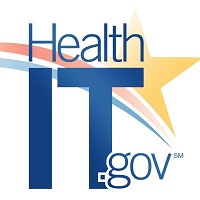 By Ryan Argentieri, Elisabeth Myers, Steven Posnack and Micky Tripathi, ONC
By Ryan Argentieri, Elisabeth Myers, Steven Posnack and Micky Tripathi, ONC
Twitter: @ONC_HealthIT
Steven’s Twitter: @HealthIT_Policy
Micky’s Twitter: @mickytripathi1
Astute readers of the Health IT Buzz Blog (are there any other kind?) and those familiar with ONC’s 21st Century Cures Act (Cures Act) Final Rule will recall that we’ve talked a lot about the United States Core Data for Interoperability (USCDI). ONC’s Cures Act Final Rule adopted USCDI version 1 as a standard, thereby establishing a new baseline for the data elements required to be accessible through certified electronic health record (EHR) technology. Because it defines the floor of what’s available to be shared through certified EHRs, the USCDI is also the basic payload for nationwide and state/regional exchange networks and is the main driver of Health Level Seven International® Fast Healthcare Interoperability Resources® standards development in the US. In effect, the USCDI has become the de facto minimum dataset of the health care delivery system.
Though the USCDI sets the floor of data availability, it’s not static. ONC has established an expansion process that creates a “rising floor” over time based on input from industry and federal partners and consideration of various factors such as impact, feasibility, and standards maturity. In July 2021, addition of social determinants of health, sexual orientation, and gender identity data elements. ONC published USCDI version 2, which included some significant updates such as the
A mark of the USCDI’s success is that ONC is fielding an increasing number of requests to expand it even more. We love that, but it also poses a challenge because there’s a tension in managing USCDI growth. On the one hand, we want to keep expanding it to drive more interoperability. But on the other hand, we need to be judicious about what and how much to add in any given year because of the USCDI’s broad applicability to certified EHRs, interoperability transactions, and its potential effect on user experience and workflow.
We do recognize, however, that there are specific, but important, use cases that require consistency and alignment on datasets that go beyond the USCDI, and we need to be responsive to those needs. For this reason, we are launching a new initiative called USCDI+ to support the identification and establishment of domain or program-specific datasets that will operate as extensions to the existing USCDI. In particular, USCDI+ is a service that ONC will provide to federal partners who have a need to establish, harmonize, and advance the use of interoperable datasets that extend beyond the core data in the USCDI in order to meet agency-specific programmatic requirements. This approach will allow us to better serve our federal partners, assure that extensions build from the same core USCDI foundation, and create the opportunity for aligning similar data needs across agency programs.
USCDI+ efforts for quality measurement and public health are just getting underway with our CMS and CDC partners, and we’ll add more once we’ve gotten the program more firmly established. Our USCDI+ process will follow the same basic principles that we’ve used for the USCDI, but with some additional components including:
- A discovery process and charter
- Identification of use cases, data specifications, and agency programmatic incentives/requirements for use of any specific USCDI+ dataset
- Evaluation of data classes/elements according to objective criteria, such as industry priority and readiness, level of standards maturity, and identified agency need
We’ll continue to use similar processes as the USCDI, such as seeking input from the Health IT Advisory Committee to stimulate public engagement and help shape USCDI+ datasets.
The USCDI+ program is another way that ONC is embracing our “coordinator” role to help our federal and industry partners successfully achieve their missions. It will help the federal government more effectively use taxpayer dollars in health IT activities and will benefit industry with better alignment of data standards across federal programs.
This article was originally published on the Health IT Buzz and is syndicated here with permission.
